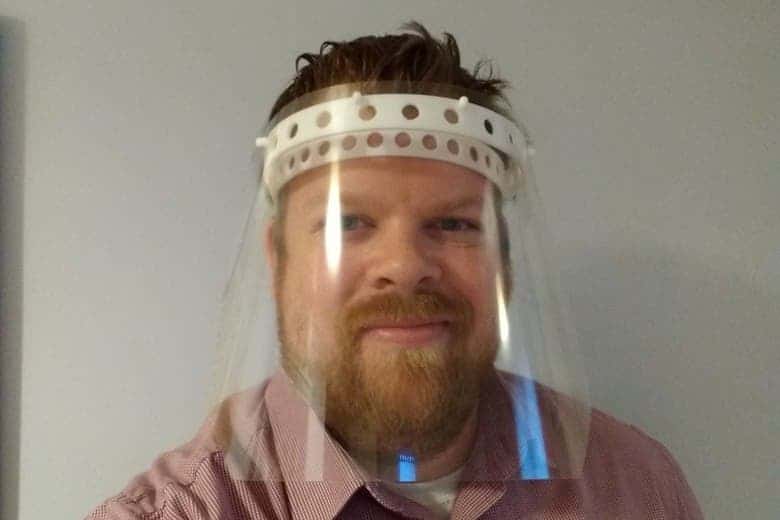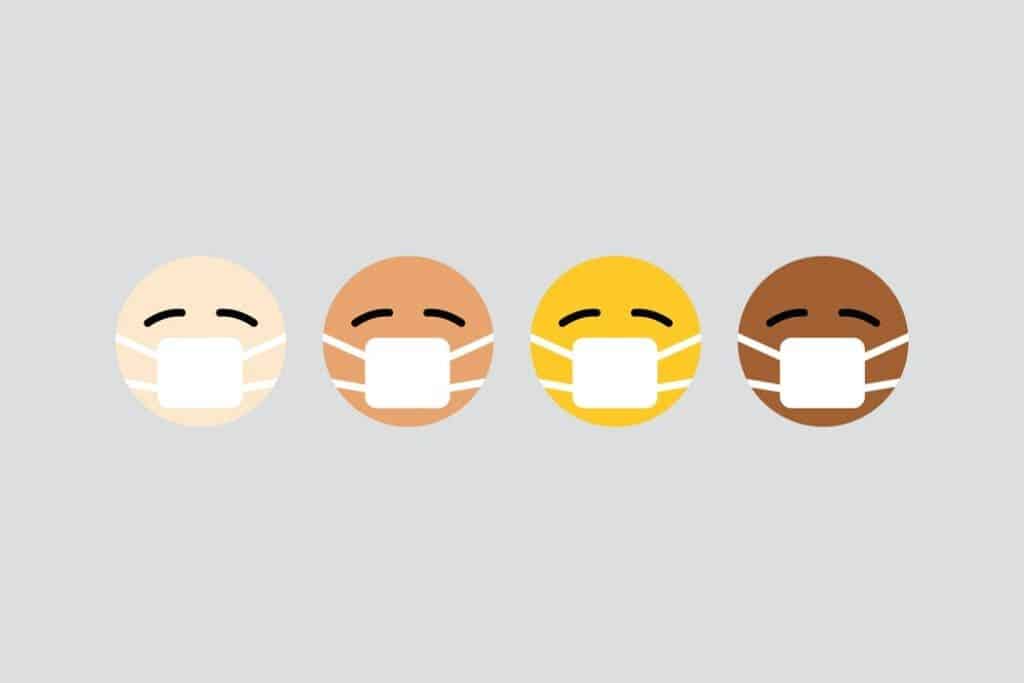Could face shields be just as — or even more — effective than face masks?

The transmission mechanisms of respiratory viruses are a surprisingly heated topic in the scientific literature, and there are still many details we don’t yet understand about how these pathogens get passed from one person to the other.
The evidence regarding the effectiveness of protective face gear (masks and shields) is also incomplete. However, especially in recent times, there has been a surge of studies showing that when worn adequately, face masks can offer some protection against respiratory viruses. Even improvised, cloth masks can offer protection and can be used to effectively curb the spread of viruses such as SARS-CoV-2.
But what about face shields?
The need for speed — in producing and distributing PPE
It’s been almost two months since Italy announced a nationwide quarantine lockdown. Not long afterward, almost all of Europe retreated in a lockdown meant to reduce the transmission of COVID-19. California became the first US state to issue a stay-at-home order in response to the evolving coronavirus disease 2019 (COVID-19) pandemic, quickly realizing that without the capacity for mass-testing and contact-tracing, the disease would spread like wildfire.
Now, although the capacity for testing isn’t even close to what is needed, several US states are already craving to reopen the economy as quickly as possible.

So far, the best containment and mitigation strategies seem to be those deployed in South Korea and Hong Kong — rapidly expanding health infrastructure and production of personal protective equipment (PPE), and making sure that a substantial part of the population is tested and wears protective gear. Initial suppression is also not sufficient: we’ve seen in the case of Singapore that even if everything is done right in the first phase, without sufficient testing and contact tracing, there will be subsequent waves of infection.
At the moment, most countries (including the US) don’t have the testing and contact tracing capacity. This means that if we want to ease up on the lockdown and distancing measures, widespread PPE is one of our best allies to limit the spread of the virus.
Face masks and face shields
We’ve written extensively about face masks in the past few weeks. Initially, the guidance advised against using face masks, this being motivated in large part by a fear of shortage where it mattered most: for health workers. The evidence is also somewhat unclear — we know that face masks offer some protection, but it’s still unclear just how much, and doctors are reluctant to make guidance on incomplete evidence.
But as the weight of evidence leaned more and more in the favor of using face masks, and as cloth masks don’t risk producing shortages, the guidance quickly shifted. Already, several states are enforcing the use of face masks in crowded areas or where social distancing can’t be ensured.
But comparatively little has been discussed about face shields.

Face shields come in various forms and shapes, but the goal is the same: to provide a clear plastic barrier covering the face. To ensure optimal protection, the shield should extend below the chin, to the ears, and leave no gaps between the forehead and shield’s headpiece.
Face shields have several advantages over face masks. For starters, they don’t need to be built from a special material. The basic material is some form of transparent plastic. As a result, production and fabrication lines can be repurposed rapidly to produce face masks, and we’re already seeing this. Apple, Nike, General Motors, John Deere, and many other companies are already producing their own line of face shields. They can also be 3D-printed with relative ease.
This means that the availability of face shields, in the long run, is less likely to be a major issue.
In addition, face shields can be reused. Surgical face masks should not be reused, and although some techniques have been proposed to clean respirator masks, that setup is only realistic in a hospital or university setting. Cloth facemasks can be reused, though they should be washed immediately after being used, and after a certain number of washes, they can lose some efficacy.
Face shields are also more comfortable than masks and can be worn for hours on end with minimal discomfort. They are easily cleaned with soap and water, or common household disinfectants.
But perhaps most importantly, face shields appear to significantly reduce the amount of inhalation exposure to influenza virus, another droplet-spread respiratory virus. In a simulation study, face shields were shown to reduce immediate viral exposure by 96% when worn by a simulated health care worker within 18 inches of a cough. Even after 30 minutes, the protective effect exceeded 80% and face shields blocked 68% of small particle aerosols, which are not thought to be a dominant mode of transmission of SARS-CoV-2. When the study was repeated at the currently recommended physical distancing distance of 6 feet, face shields reduced inhaled virus by 92%.
The Shield hero?
Policy and guidance should be influenced by clinical studies, but it’s unlikely that clinical studies will be carried out and finished in time to be relevant in the current context. As even well-prepared countries are facing secondary waves of infection, and as everyone is itching to reopen the economy, we need all the help we can get when it comes to reducing viral transmission.
It seems plausible that face shields can be effective in this context, at least in key places, or for key workers (in shops or public transportation, for instance). But without policy or guidance in this sense, it’s extremely unlikely that people will start adopting this protection by themselves.
The case for face shields is also made by a group of researchers in a JAMA editorial. It’s a practical and cheap intervention which can make an important difference, they argue. We should definitely consider it, at the very least.
“Face shields, which can be quickly and affordably produced and distributed, should be included as part of strategies to safely and significantly reduce transmission in the community setting. Now is the time for adoption of this practical intervention.”
Was this helpful?



